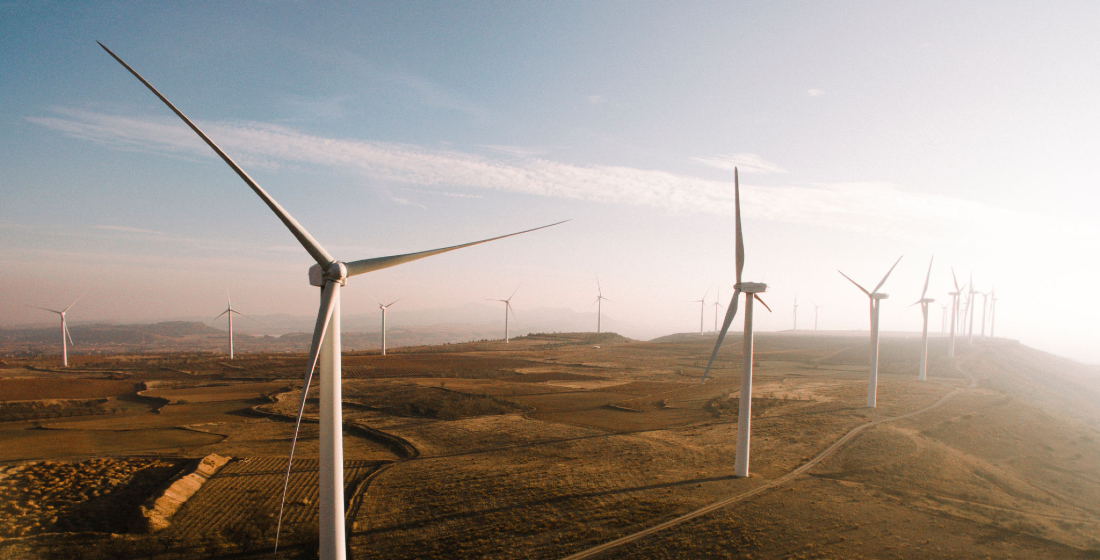Keynote: Nikol of Siemens Financial Services on facing the challenges of 2022
From regulatory developments in the ESG reporting space to the imperative for reform to the OECD Consensus, Ralph Nikol, senior director of ECAs and investment guarantees at Siemens Financial Services speaks to TXF about what is top of mind amid another challenging year for export-oriented, international companies in a post-pandemic world.

TXF: Can you tell us about your role in Siemens Financial Services since the group restructured into separate entities?
 Ralph Nikol (RN): As a focused technology company, Siemens is uniquely positioned to combine innovative technologies from the real and the digital worlds to transform industries that form the backbone of our economies. Siemens Financial Services (SFS) is the B2B financing arm of Siemens and serves Siemens’ customers and related markets and domains providing tailored financing solutions for 25 years.
Ralph Nikol (RN): As a focused technology company, Siemens is uniquely positioned to combine innovative technologies from the real and the digital worlds to transform industries that form the backbone of our economies. Siemens Financial Services (SFS) is the B2B financing arm of Siemens and serves Siemens’ customers and related markets and domains providing tailored financing solutions for 25 years.
In so doing, the SFS Finance Advisory (SFS FA) team strives to find the best available financing solution in the market for sales related financing needs by considering both internal and external options. As a key expert for ECAs, investment insurance schemes and for liaising with the European Investment Bank, SFS FA is the perfect place for me, because I can provide my advisory services to Siemens Businesses and Siemens Healthineers. Besides these financial structuring related tasks, I am also responsible for Siemens’ policy activities in industry associations’ export finance working groups like BDI, VDMA and BIAC as well as the German Euler Hermes Advisory Council (‘Euler Hermes Expertenkreis’).
TXF: How is 2022 shaping up for you in terms of the areas of concern and how is your team dealing with these new risks – geopolitics, the Ukraine war and sanctions, interest rates/inflation pressures/supply chain issues/transparency?
RN: Twenty twenty-two has indeed been a challenging year for all of us so far. The pandemic as well as the Ukraine war and the subsequently imposed sanctions and countermeasures have sharpened risk awareness and again shown that a thorough risk mitigation with export credit and investment guarantee cover is essential.
Given the global developments and dynamics a stronger focus needs to be placed on utilising such instruments for upcoming projects. In addition, we also need to spend some time to reflect on the existing cover instruments, double checking if these are still sufficient. At SFS FA, we are closely monitoring the current developments and discuss all consequences and possible scenarios openly in our team.
TXF: You advise Siemens on ECA support and investment insurance and on developments on the EU Green Deal and the activities of the EIB. How amenable are external bodies to hearing the exporters’ view? How do you liaise with regulators?
RN: All the bodies mentioned can be considered as ‘politically motivated lenders’. As such, they pursue overarching policy goals by providing (partial) financing or cover for risks and thus enable financing solutions for projects together with the private market. Feedback from the industry is always highly appreciated to define suitable framework conditions and to ultimately achieve these policy goals.
Public export and investment insurers maintain a regular exchange with their users, either directly or via industry associations. From our point of view, all topics raised are taken seriously, although the adaption approaches differ from country to country. For example, most ECAs have quickly adapted their portfolio to provide targeted support during the pandemic, but only some of them have used this opportunity to introduce permanent changes in favour of their exporters. As a country with a strong export industry, it was not deemed necessary for Germany to implement fundamental changes which could, for example, provide a competitive advantage towards Asian competitors.
At the time of its announcement, the EU Green Deal was just a policy roadmap, and the COVID-19 pandemic has delayed the implementation of related support programmes. From a customer point of view, support schemes will be available on both the European and the national level.
Besides the EU Green Deal, other related measures need to be in focus, like the EU Taxonomy. This framework classifies investments as green and thus steers capital flows. All these approaches need to reflect industry feedback, which we gladly provide.
TXF: What still needs to change – specifically what are your goals for the industry?
RN: In general, the programmes need to be accessible and transparent. Of course, this requirement does not only refer to end customers, but also to the industry, for example, for R&D programmes. German and European industry technologies play a key role in climate change and energy transition, but we need to bring those technologies into the market, especially by providing attractive financing solutions.
Nevertheless, if highly regulated programmes are aggravating the export of highly efficient technology into emerging markets, those countries will import other, maybe less green or effective technology. ESG related programmes need to address the different economic backgrounds of target countries and customers, as well as their current climate exposures.
TXF: What would an ideal modernised OECD Consensus look like from an international exporter’s perspective?
RN: From my perspective and also following the opinion of the industry association’s export finance working groups like BDI, VDMA and BIAC, there are a lot of aspects that have to be modernised and updated. Since the arrangement came into force in 1978, the world has changed fundamentally, and exporters are facing new challenges with regards to market and customer demands, competitors, geopolitical structures, financing, etc. Currently, the OECD is working on a revised version. From an exporter’s point of view, a new OECD Consensus should be drafted based on two guiding principles: a maximum of flexibility for covered transactions and the restoration of a level playing field, especially by convincing new countries to join the new and flexible arrangement.
The European Union is in the driver’s seat to negotiate the revised arrangement for us. Finding a common position among the member states is key. Nevertheless, the EU and member states are still lacking a clear strategy of how to support European exporters compared to those of other countries, which receive extensive state support. If we do not find a strong European position and response, we will not have a good outcome for the new Consensus.
Important adaptions have already been introduced over past years, such as the increased share of eligible local cost to 40%/50% of the export contract value or the temporary reduction of the down payment requirement to 5% under certain conditions – a regulation which should be maintained as a permanent one.
Furthermore, a new Consensus should also allow for longer credit tenors which recognise the product lifecycle and more flexible repayment profiles. A shift in the ‘starting point of credit’ for projects with long construction periods and varying cashflows should also be possible. Under the current Consensus framework, new business models such as service or software based contracts cannot be covered adequately. Also, there is a lack of clear rules and incentives to promote climate-friendly, sustainable and social projects. Finally, a more suitable link to official development aid needs to be implemented. Most of these topics have been brought to the table with our industry association’s position papers and are designed to enable solutions based on market principles.
From a procedural point of view, the OECD should regularly seek dialogue with all relevant stakeholders to find a balanced solution. If the new OECD Consensus is to reflect these points, it would depend on each ECA to make this flexibility available to their exporters too. From a German exporter’s perspective, this could lead to additional challenges.
TXF: What is lacking for German exporters specifically? Can you elaborate on the extent to which Euler Hermes is/is not using the current Consensus changes to the full – and the temporary nature of some of the changes during the COVID era with respect to local costs, etc?
RN: In the current cover framework, Euler Hermes (EH) sticks to the German exporter and is mainly content driven when defining a transaction as eligible. However, German exporters also run factories abroad or sign contracts with customers via local entities, which makes it more difficult to meet eligibility criteria. A more German interest-based approach should at least be considered to tackle these issues.
Another example is the down payment. EH calculates the down payment based on the total contract value including local costs. However, the Consensus only requires a down payment on the export contract value, ie, the value of the German and third country supplies, but not on the local costs. Almost all OECD ECAs simply apply this Consensus rule, which puts German exporters using Hermes cover at a competitive disadvantage.
For projects within the scope of the Climate Change Sector Understanding (CCSU), Hermes has already waived the down payment on local costs. However, this exception falls short. The multi-faceted German mechanical and plant engineering sector also offers many other products that are particularly worthy of support, such as medical technology or rail infrastructure and rolling stock.
Furthermore, we must also critically review other foreign trade and investment promotion schemes, for example investment guarantees. In recent decades, foreign investors have been confronted with multiple approaches of host states, implementing political agendas and enforcing their interests towards foreign investors. Whereas direct expropriation almost never occurs, indirect measures have increased sharply. Undoubtedly, such measures may have effects on foreign investments which are equivalent to direct expropriation. However, the investment guarantee scheme has not been adapted accordingly and is thus struggling to provide investors with the required protection in certain cases. Of course, this is also true for other countries’ investment insurance schemes.
TXF: How can ECAs and exporters improve their transparency on ESG-related reporting. What is Siemens doing in this area? What more can ECAs do?
RN: Sustainability is a key premise for us at Siemens and an integral part of our business. Siemens has already committed to turn all its operations carbon neutral by 2030. With its DEGREE Framework [Decarbonisation, Ethics, Governance, Resource efficiency, Equity and Employability], Siemens has defined ambitious goals and fields of action to contribute.
Supporting the Siemens DEGREE framework, SFS is one of the leading providers in financing greenfield renewable projects. We are undoubtedly facing major challenges to achieve the goals set out in the Paris Climate Agreement, namely to limit global warming and reduce greenhouse gas emissions. Many countries and economic zones are therefore setting themselves own targets and this adds additional complexity to global-acting companies. With the Taxonomy, the EU will define a set of rules with criteria for sustainable business. These will also be used by banks and ECAs. In addition to Germany, other European countries have joined forces in the ‘Export Finance for Future’ (E3F) initiative to develop guidelines for the export promotion of sustainable technologies. Among those mentioned, there are several other approaches and initiatives. A revised OECD Consensus needs to reflect these developments too.
However, if major exporting countries do not become participants in a new Consensus framework, there will be no ‘level playing field’ in climate issues either, and the Consensus will lose importance. This would cause disadvantages for exporters in Consensus bound countries. Therefore, minimum standards must also be defined in the OECD Consensus as well as incentive mechanisms. The new framework needs a balanced approach to recognise legitimate interests of exporters. The overall goal of state backed ECA schemes is to promote exports. This should always be kept in mind when requirements are defined. ECA instruments may not lose their manageability and predictability in terms of coverage requirements, application process and decisions.
TXF: What are your expectations for the future?
RN: Although the current situation holds many challenges, there is sufficient momentum to shape new framework conditions. It is becoming clear that we must reconsider all promotion schemes, especially with regards to ESG topics. With a proactive approach, we can achieve a lot for climate protection and exporters alike. Adaptability has been shown during the pandemic and other crises can serve as accelerator for reforms.





